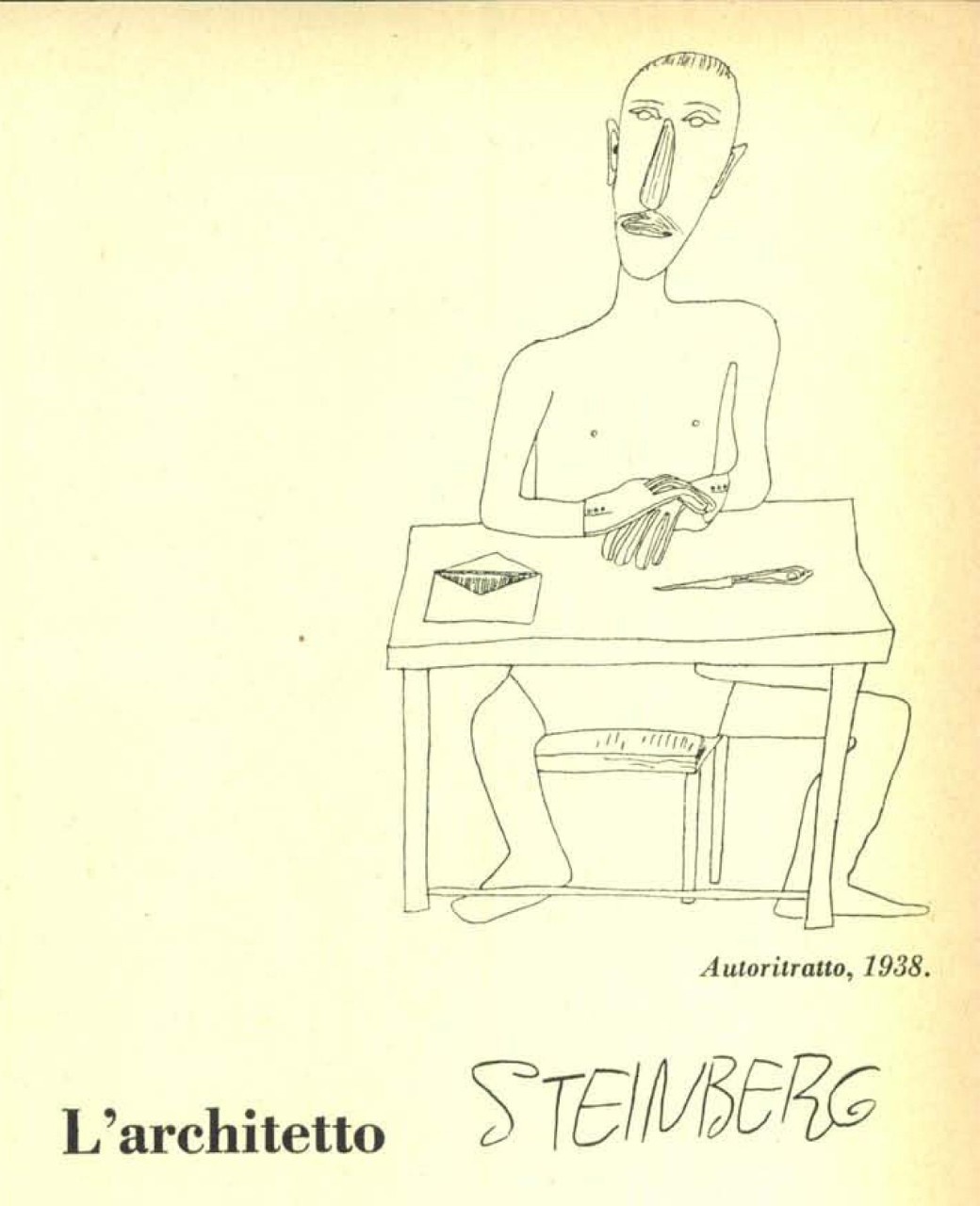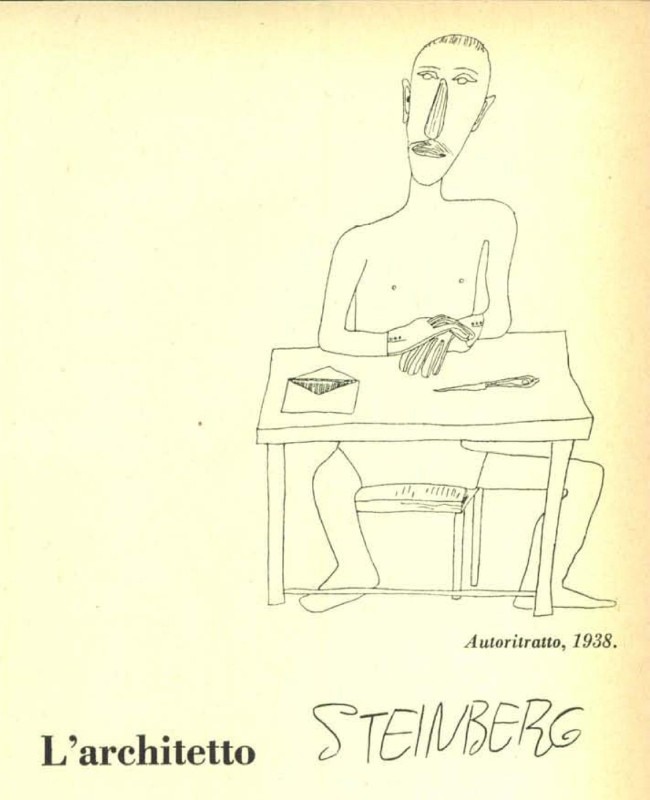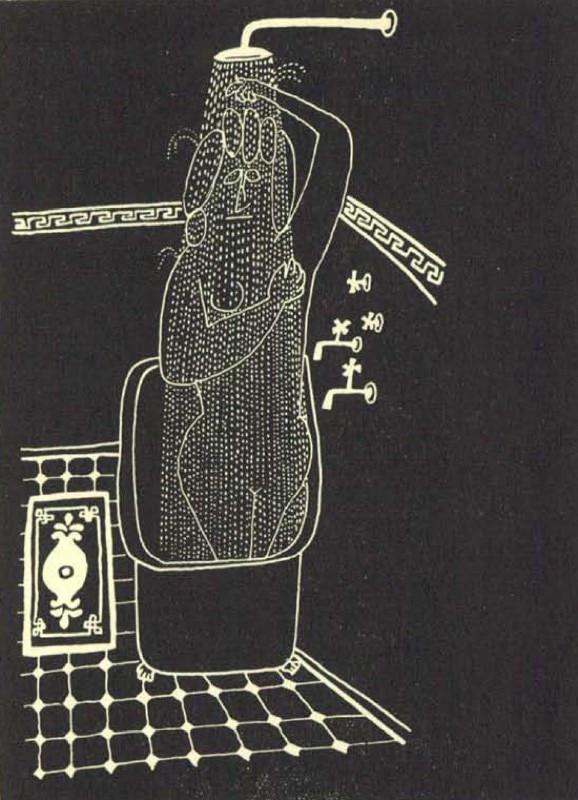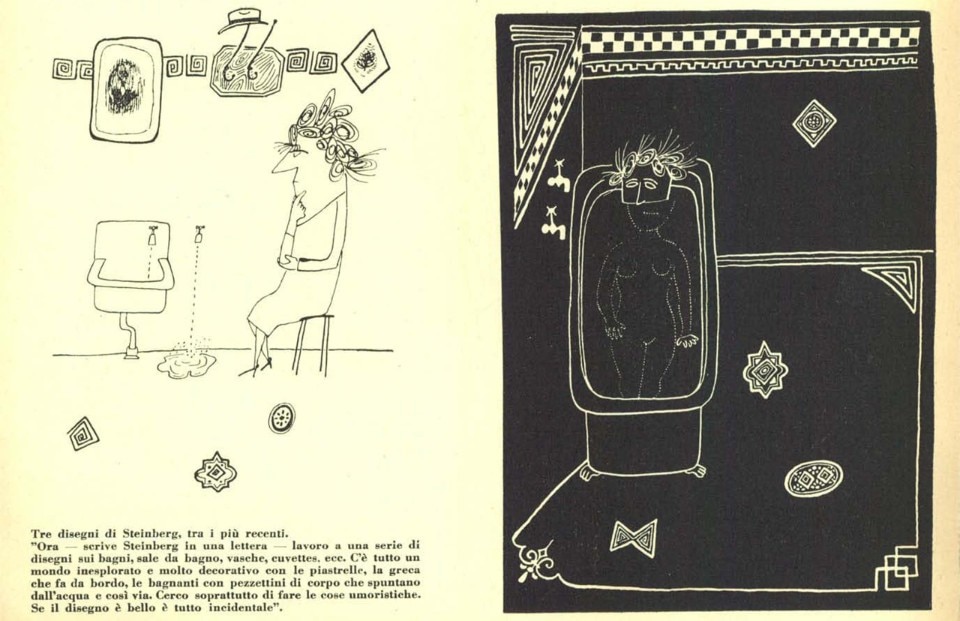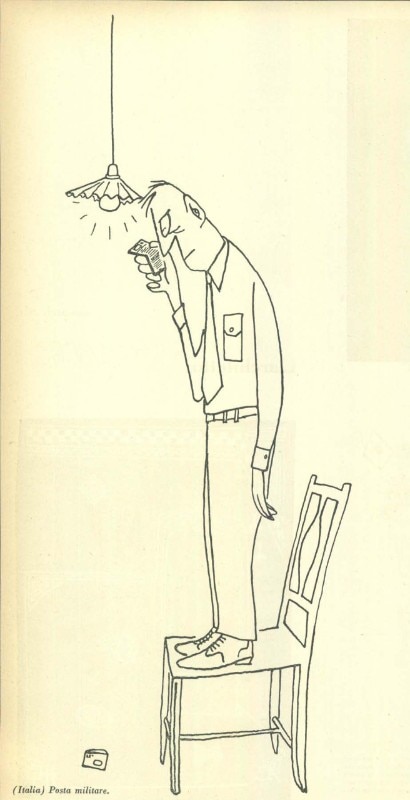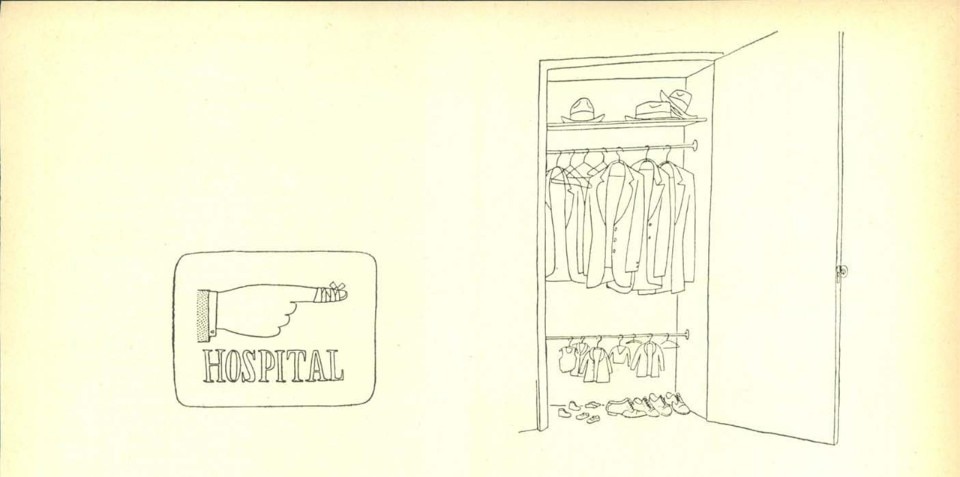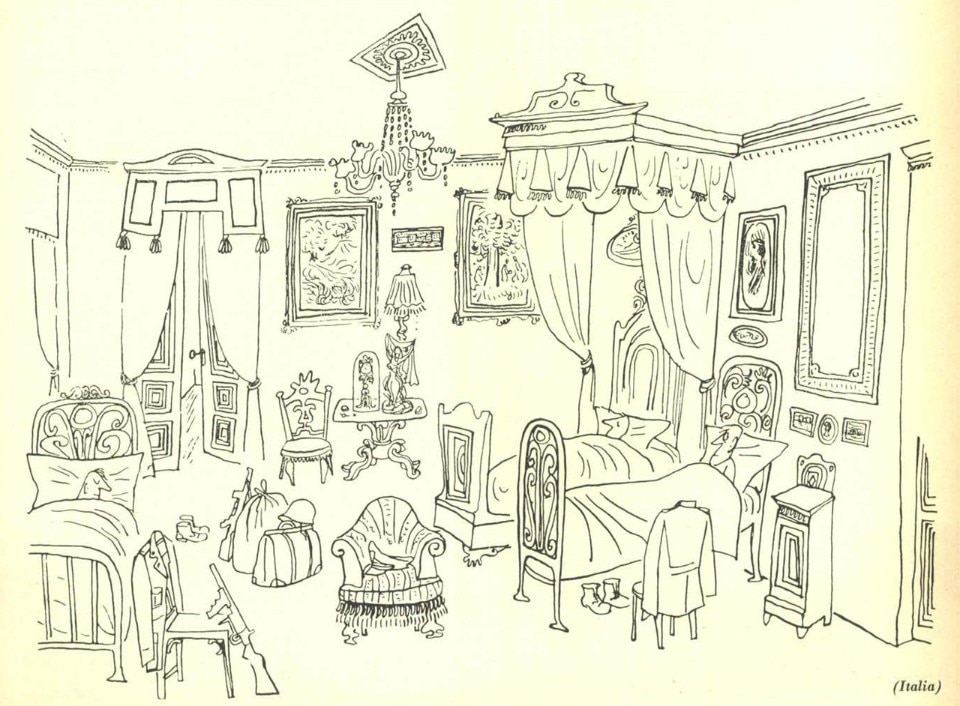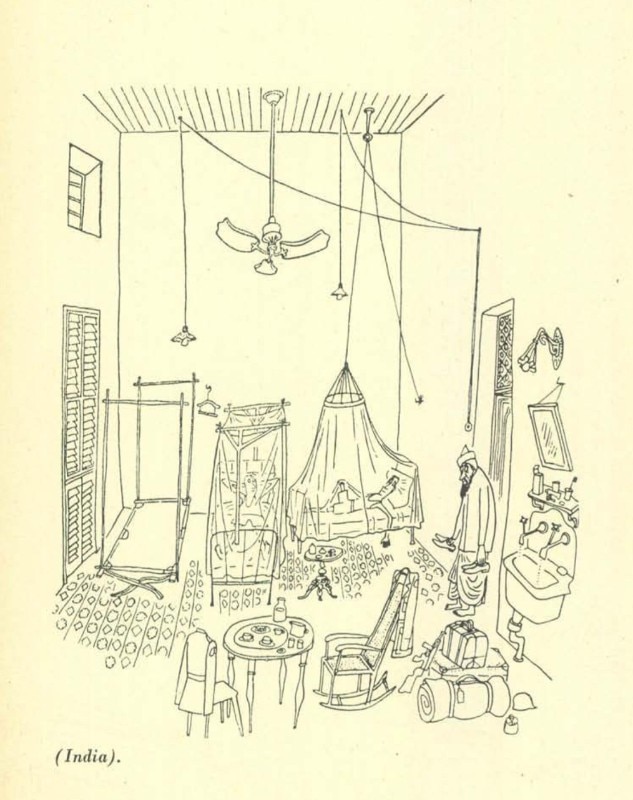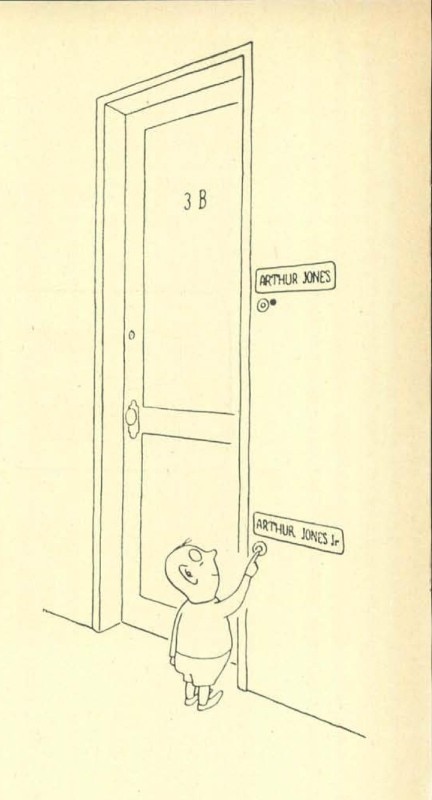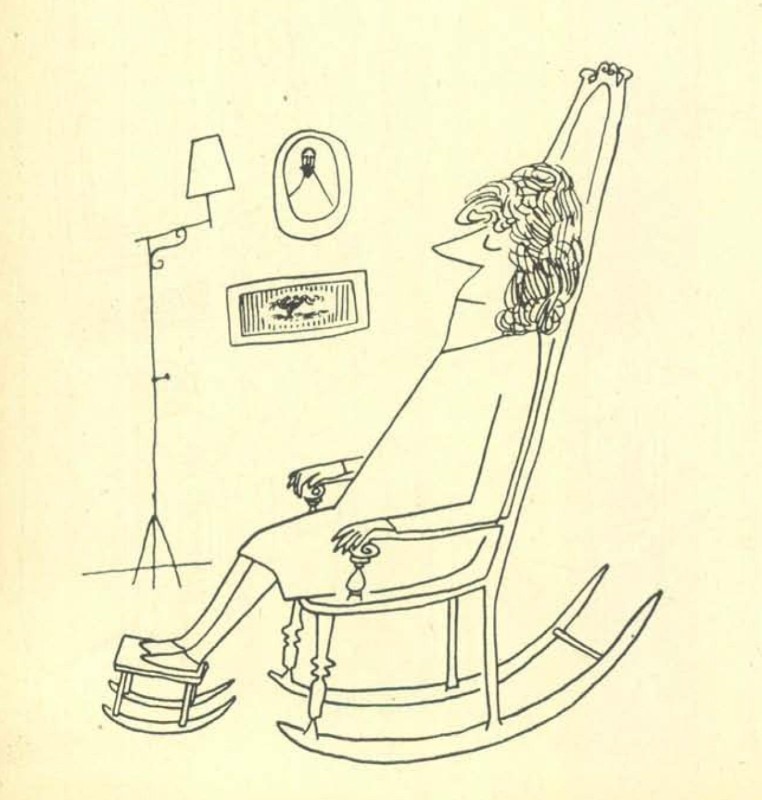Celebrated and iconized all along his career — he, the one to actually create modern icons such as his legendary View of the World from 9th Avenue — it is no mistery that Saul Steinberg has always held a peculiar and powerful charm on those who work in architecture. This sounds even less surprising if we consider that Steinberg himself was an architect, an architect who graduated at Politecnico di Milano more specifically, in 1940, at the end of his first life which had taken place in Italy.
Steinberg immediately shunned architecture, by the way, despising that graduation diploma remarking his belonging to the “Jewish race”, and fleeing Italy right after its attainment, to start his way more renowned second life in the United States, as the non-verbal voice of the New Yorker and other several famous magazines.
Another architect who had fled architecture since the very beginning to dive into cinema industry and books was the writer Aldo Buzzi, a friend of Steinberg’s for a lifetime — for two lifetimes, to be precise — who dedicated to him a first, almost confidential, article on Domus in 1946, halfway between the two existences of the great artist.
(The article was translated to English by Fulvia Chesi)
"A few words about the architect Saul Steinberg. In 1933, after attending the Faculty of Philosophy in Bucharest for a year, Steinberg went to the station and got on a train to Milan. In his suitcase, he only had a box of pink, green and blue sugar candies and some drawings. On the train, he sketched a few more. In Milan, he enrolled in the Faculty of Architecture and continued to draw, because Steinberg was born to draw just like Fred Astaire was born to dance. In ‘36, I believe, his first drawing (one column wide) was published in “Bertoldo”. It was signed Xavier; but we immediately went to look for him in his room at the Casa dello Studente. Steinberg was smoking with a satisfied look on his face, and when he saw us, he smiled mischievously.
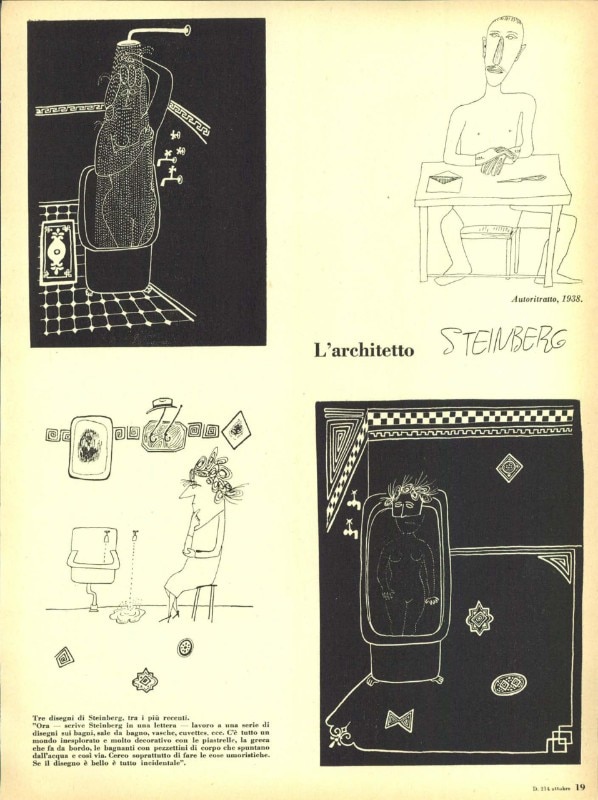
Life was just starting to look up for our friend. Every morning, he would sleep until late in his new room at the Bar del Grillo. At eleven A.M., I would knock on his door and he would still be asleep. The small table would be covered in cigarette burns and drawings, the smell of smoke filling the room. Below, in the small garden, the waiter would sweep the tiles of the dance floor. But Steinberg always took a long time to get up.
- Why do you keep waking me up at dawn? - he would mutter. He would cough, light a cigarette and put on his glasses. In the meantime, the war was approaching, and many had already left, while others were busy at the consulates and police stations with their passports and visas. Steinberg left in 1941, at the very last moment. He even managed to become an architect in time.
The last period he spent in Italy (San Vittore, the prisoners using breadcrumbs to make playing cards, the confinement) now was almost a distant memory for Steinberg, and as it always happens with the memories, he would soon forget all the bad stuff. Finally, at the very last minute, having received his last visa, he managed to get on the plane to Lisbon.
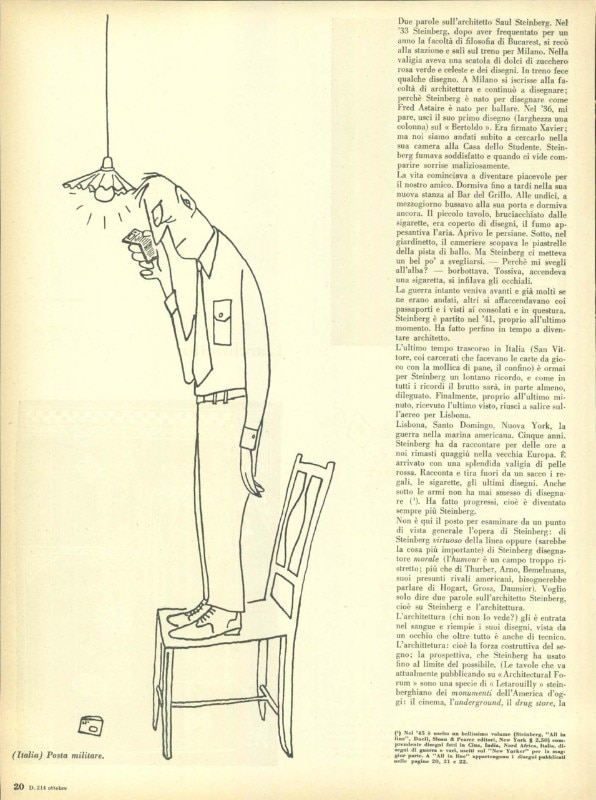
Lisbon, Santo Domingo, New York, the war in the US Navy. Five years - Steinberg has so much to tell us - us back in good ‘ol Europe - , that he could talk for hours. He arrives with a beautiful red leather suitcase. He tells his stories and pulls out from a bag presents, cigarettes, his latest drawings. Even in the army he never stopped drawing (1). He has made progress, that is, he has become more and more Steinberg. This is not the place to examine Steinberg’s work from a general point of view: Steinberg the expert of ink and line or (more importantly) Steinberg the moral illustrator (‘humour’ is too narrow a field; rather than Thurber, Arno, Bemelmans, his supposed American rivals, we should speak of Hogarth, Grosz, Daumier). I just want to say a few words about Steinberg the architect, that is, about Steinberg and architecture.
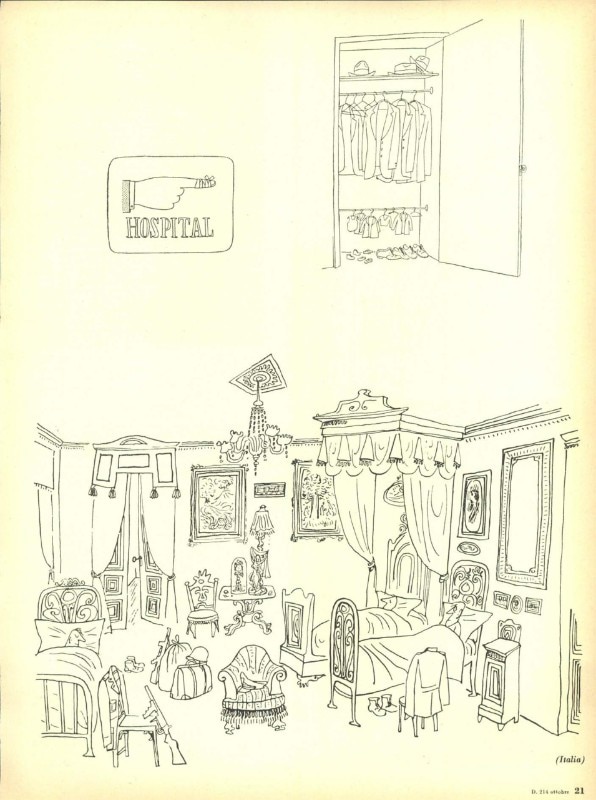
Architecture (who can’t see that?) runs in his blood and fills his drawings, he sees it through technician’s eyes, too. Architecture: i.e. the constructive force of the sign; the perspective, which Steinberg has used as far as possible. (The drawings he is currently publishing in “Architectural Forum” are a kind of Steinberg-style “Letarouilly” of contemporary American monuments: the cinema, the underground, the drug store, the house with bugs and mice). Architecture: i.e. the styles, fashions, controversies, exaggerations, Montessorian manias of certain architects... The mysteries of the modern, the monumental, the rational, the organic. In this sense, his architecture is precise down to the smallest detail. Steinberg could be an excellent architect, but I am convinced that he will never be an architect. He can’t stand all the hassle. At school (in those days, the top of the class drew in the style of Le Corbusier; today, they might use Conté crayons to give a Wrightian touch to their work), his designs were clearly drawn by a happy, independent hand. But even the professors understood that Steinberg would not be an architect. They smiled as they thought of his lions, monuments and panoramas. It was hard to be strict with him. When he brought to school his work on the Borromeo Palace, the Borromeo family’s Gothic motto Humilitas had become Humiditas. If you think about it, it isn’t a simple joke."
Aldo Buzzi
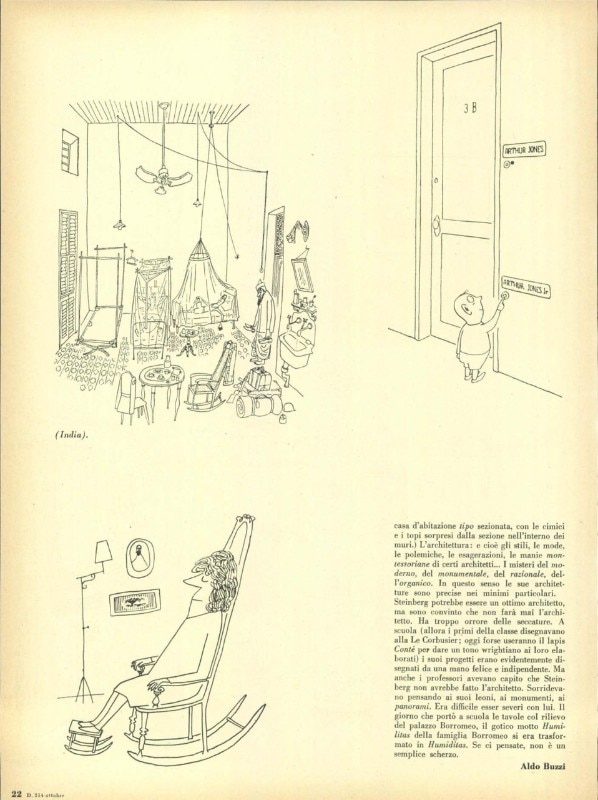
(1) In ‘45 a beautiful volume was published (Steinberg, “All in line”, Duell, Sloan & Pearce publishers, New York $2.50). It included drawings made in China, India, North Africa, Italy, drawing about the war and many other subjects, most of which appeared in the “New Yorker”. The drawings published on pages 20, 21 and 22 come from “All in line”.


